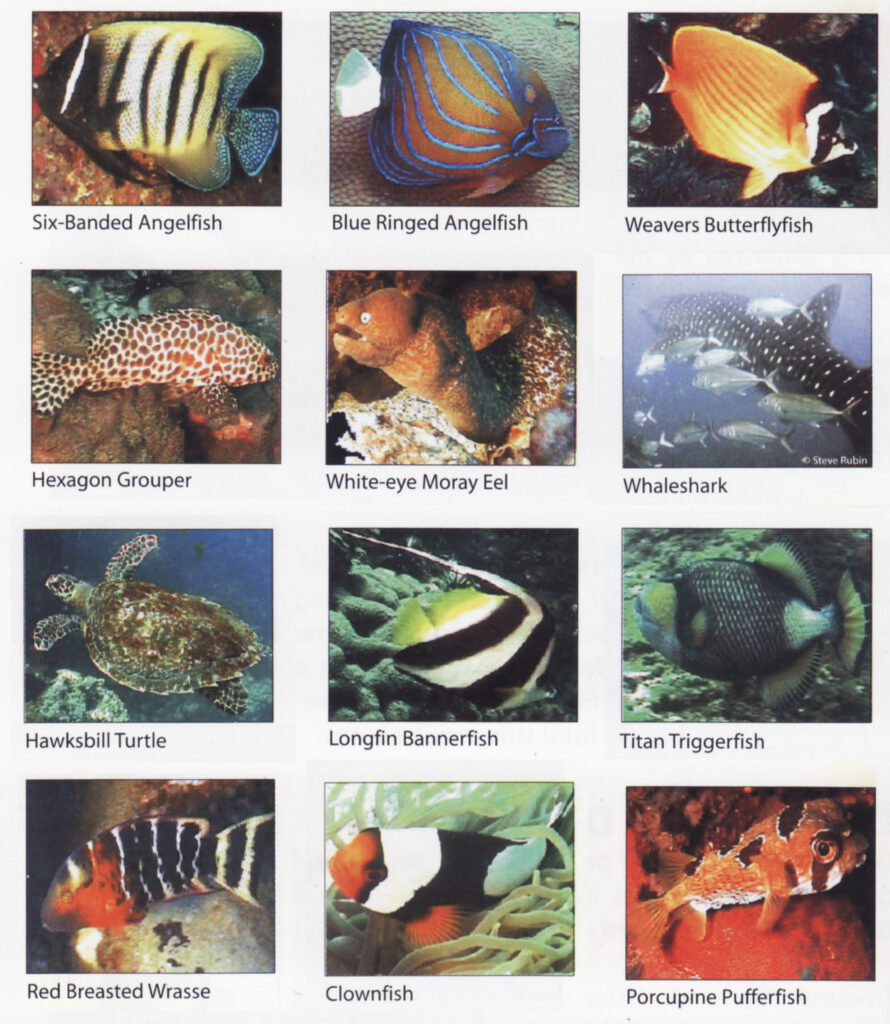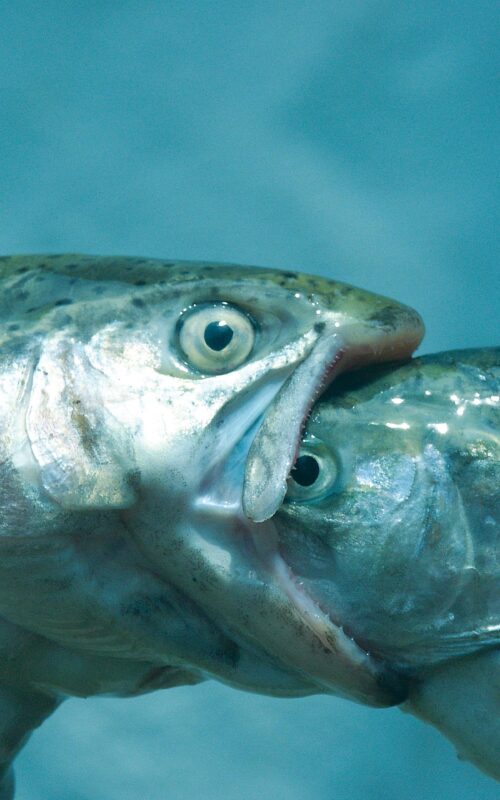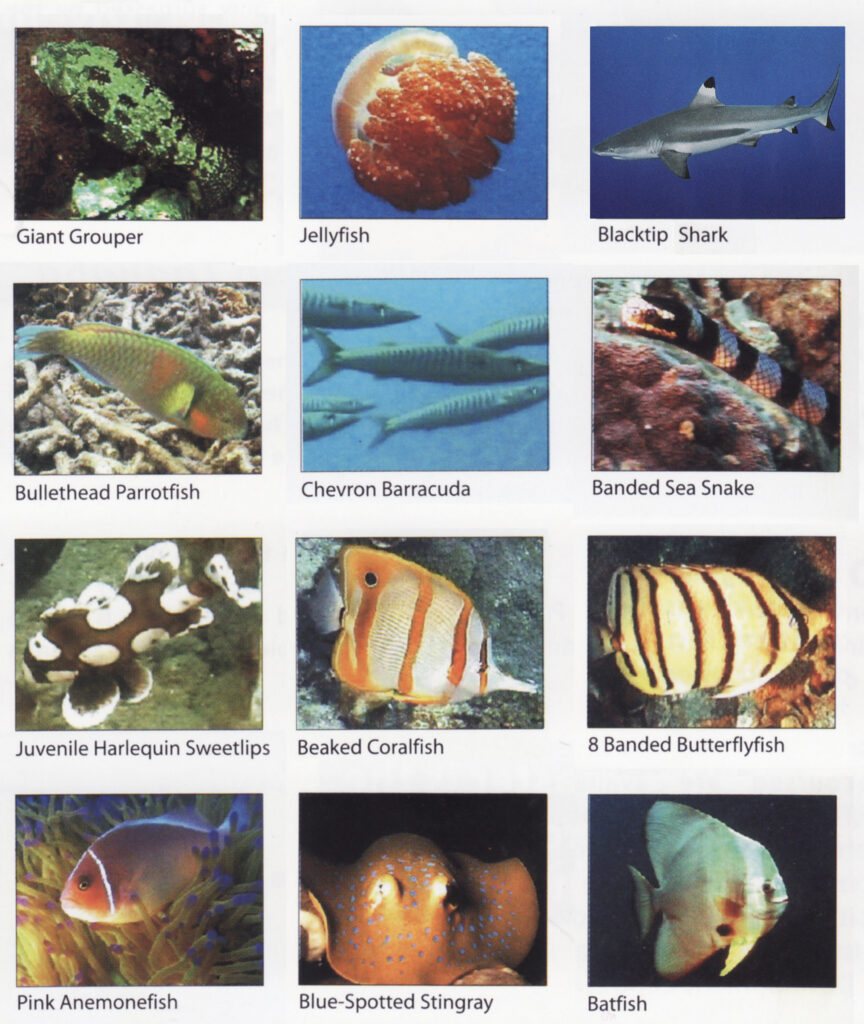Exploring the marine life around dive sites in Koh Tao can be a truly rewarding experience, especially if you know what it is you are looking at or looking for. It’s a good idea to familiarize yourself with the specific marine species that are commonly found in the waters around Koh Tao. Learn about their habitats, behaviors, and distinctive features. This knowledge will help you spot and identify them underwater. Your Divemaster’s at Big Blue Diving will definitely be briefing you on the typical marine life located at the dive site you are at but its not a bad idea to do a bit of homework yourself, so here are some examples of marine life you might encounter at dive sites around Koh Tao, along with their habits, behaviors, and distinctive features to look for:

Parrot fish: These colorful fish are known for their beak-like mouths and vibrant hues. They graze on coral, which is why you might hear them crunching as they feed. Parrot fish also play an important role in reef ecology by helping to control algae growth.
Nudibranchs: These tiny, colorful sea slugs are a favorite among macro photographers. Look for their intricate patterns, bright colors, and unique shapes on corals and other surfaces.
Anemone fish (Clown fish): Found in sea anemones, these fish are famous for their association with the stinging tentacles of anemones. They have a mutualistic relationship – the anemone provides protection, and the clown fish offer food scraps in return.
Moray Eels: These elongated eels can be found in crevices and coral heads. Their open mouths might look intimidating, but they use them to breathe and not for aggression. Moray eels have a distinctive appearance with their sharp teeth and snake-like bodies.
Giant Clams: These stunning, colorful creatures are found nestled in the coral. Look for their unique patterns and the way they open and close their shells. Giant clams can be quite large and impressive.
Turtles: Green and hawksbill turtles are commonly sighted in Koh Tao’s waters. They often rest on coral formations or glide gracefully through the water. Observing their gentle movements and their interaction with the surroundings can be fascinating.
Cuttlefish and Squid: These cephalopods are known for their color-changing abilities and their distinctive swimming patterns. They can rapidly change their skin color and texture to blend into their environment or communicate with other members of their species.
Blue-Spotted Stingrays: These small stingrays have distinctive blue spots on their bodies. They tend to bury themselves in sandy areas during the day and can be seen swimming gracefully in search of food at night.
Barracuda: These sleek predators are often found in open water or around rocky formations. Their silver bodies and pointed jaws give them a distinctive appearance. Barracudas are known for their curiosity and might come close to inspect divers.
Trigger fish: Recognizable by their triangular bodies and the unique way they swim, trigger fish are known for their territorial behavior. Be cautious around nesting sites, as trigger fish can become aggressive when protecting their eggs.
Whale Sharks: Another rare but incredible sighting is the whale shark. These massive filter feeders are the largest fish in the ocean. Keep an eye out for their distinctive spotted pattern and immense size.
Spend time observing the underwater environment without rushing. Look in nooks, crannies, and crevices for hidden marine creatures. Patience is key to spotting well-camouflaged or elusive species. Many marine creatures have evolved to blend into their surroundings. Train your eyes to recognize subtle color variations and shapes that might indicate the presence of hidden animals. Understanding the behavior of marine species can provide clues to their identity. Some fish have distinctive behaviors, such as cleaning stations or specific feeding habits, that can aid in identification. Dive lights can help you see into dark crevices and shaded areas where marine life might be hiding. Some creatures are more active at night, so consider participating in night dives as well.
Becoming proficient at identifying marine life takes time and practice. Enjoy the process of discovery, and respect the marine environment you’re exploring. Always prioritize the well-being of the marine life you encounter. If you’re into underwater photography, use your camera responsibly. Avoid using a flash in sensitive areas, as it can harm marine life. Be patient and wait for the right moments to capture natural behaviors. The underwater world is vast and always changing. Keep learning about marine life through books, online resources, online Videos and interactions with other divers and marine enthusiasts.
Remember, marine life can be unpredictable, and not all species may be present during your dives. It’s important to approach all marine life with respect and caution, avoiding any actions that could harm the creatures or their habitats. Keep practicing your observation skills and enjoy the thrill of discovering new and amazing marine species on each dive!

